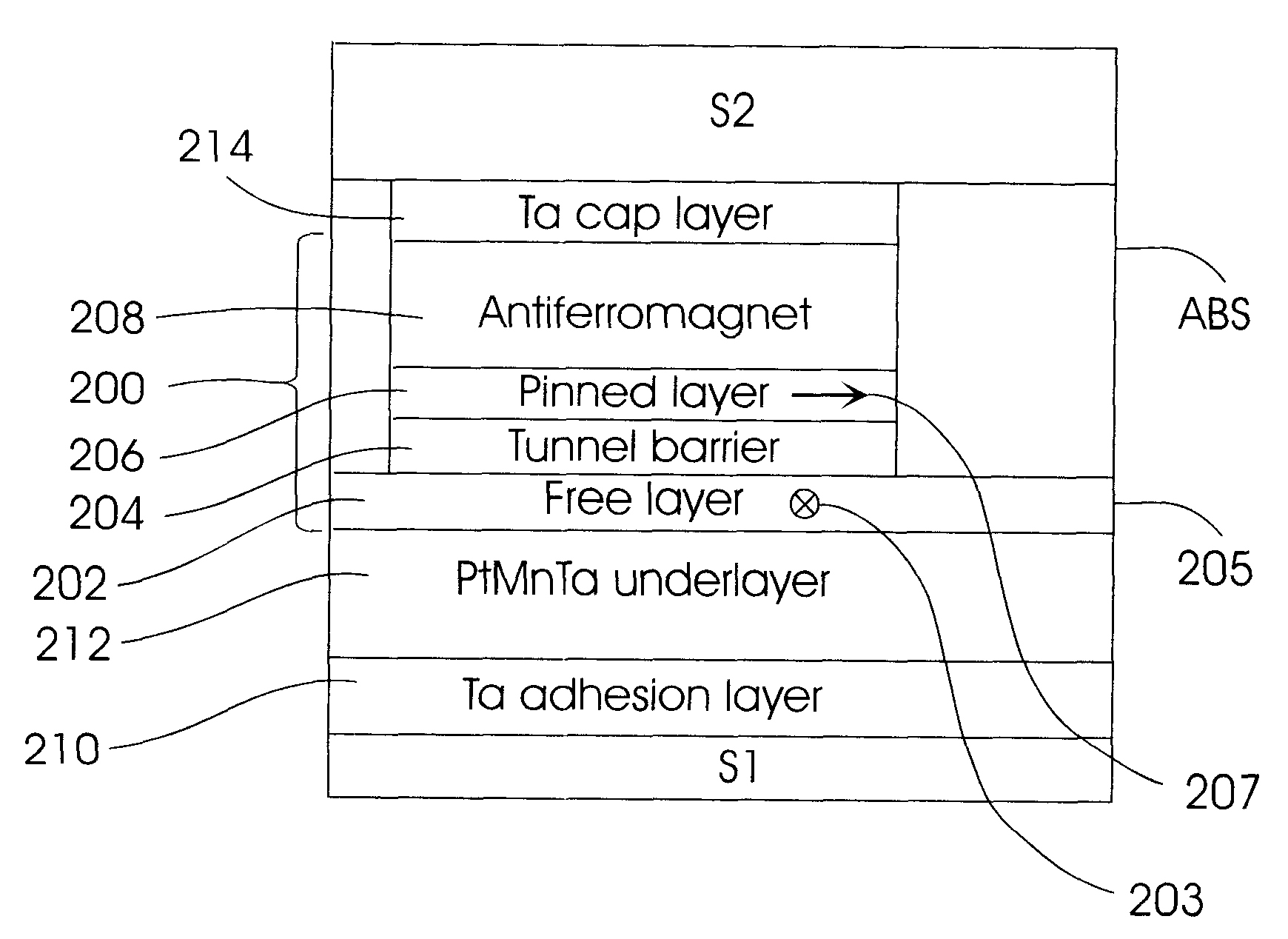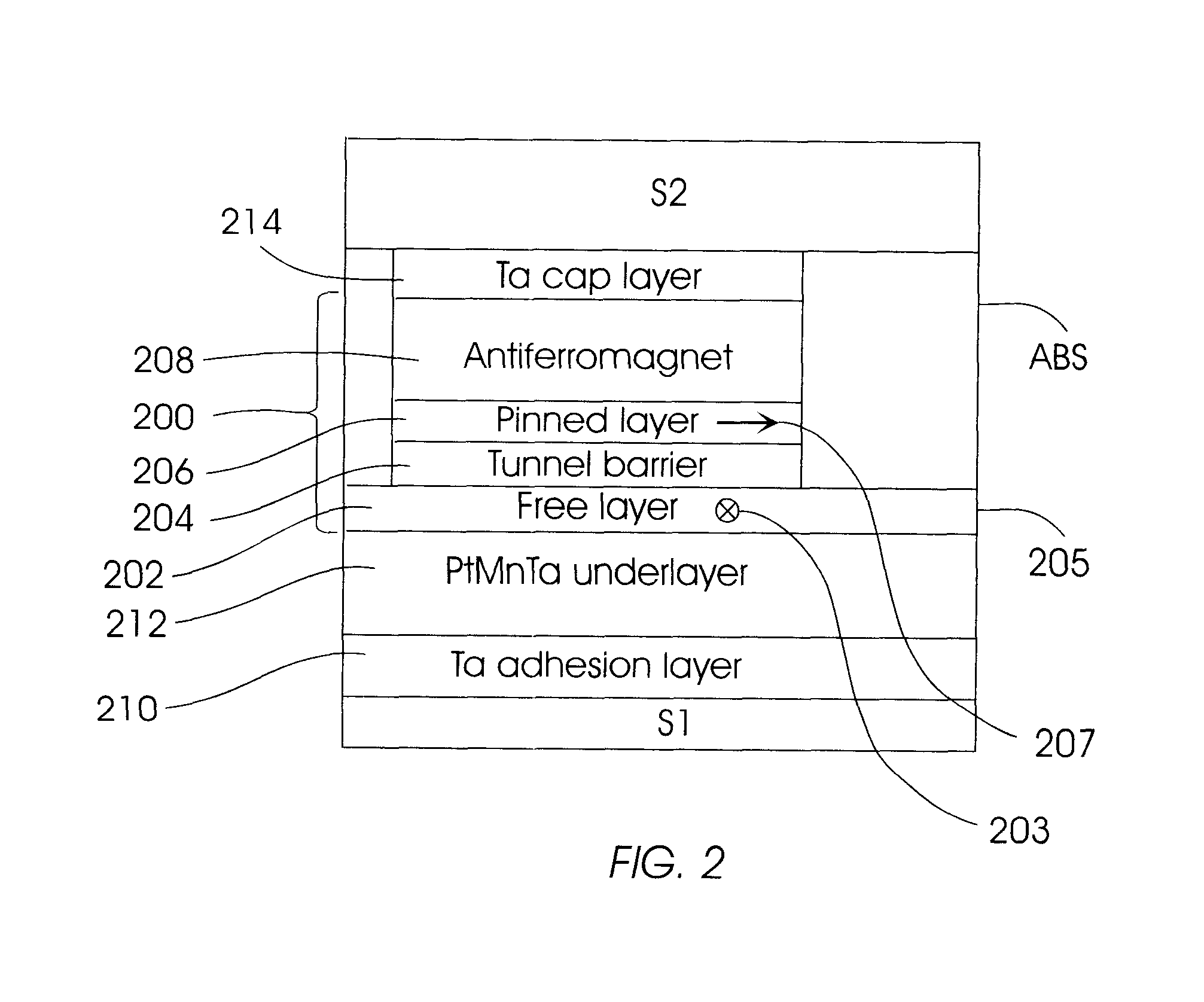Magnetic tunnel junction device with bottom free layer and improved underlayer
a tunnel junction and free layer technology, applied in the field of magnetic tunnel junction devices, can solve the problems of corroding of antiferromagnetic materials and aluminum oxide typically used for tunnel barriers during abs lapping process, poor interface to tunnel barriers or flux guides which are too thin to be useful, and difficulty in forming tunnel barrier layers thin enough
- Summary
- Abstract
- Description
- Claims
- Application Information
AI Technical Summary
Benefits of technology
Problems solved by technology
Method used
Image
Examples
Embodiment Construction
The MTJ device according to the present invention with the free layer on the bottom is fully applicable as a magnetic memory cell or as an MTJ read head without the use of the free layer as a flux guide, but is shown in FIG. 2 as a flux-guided MTJ read head. In FIG. 2, the MTJ 200 is an “inverted” structure with the free ferromagnetic layer 202 being the bottom ferromagnetic layer and formed on an improved underlayer 212. The underlayer 212 is a non-magnetically ordered Mn alloy, preferably PtMnTa, and is formed on a Ta adhesion layer 210 on top of the bottom magnetic shield S1. The MTJ 200 includes the free layer 202, the tunnel barrier layer 204, the pinned ferromagnetic layer 206 and the antiferromagnetic layer 208 exchange coupled with the pinned ferromagnetic layer 206 and a Ta cap layer 214 . As shown, the free layer 202 has its front edge 205 coplanar with the ABS for sensing magnetically recorded data from the magnetic layer on the disk. The magnetic moment 207 of the pinned...
PUM
| Property | Measurement | Unit |
|---|---|---|
| magnetic order | aaaaa | aaaaa |
| magnetic moment | aaaaa | aaaaa |
| magnetic field | aaaaa | aaaaa |
Abstract
Description
Claims
Application Information
 Login to View More
Login to View More - R&D
- Intellectual Property
- Life Sciences
- Materials
- Tech Scout
- Unparalleled Data Quality
- Higher Quality Content
- 60% Fewer Hallucinations
Browse by: Latest US Patents, China's latest patents, Technical Efficacy Thesaurus, Application Domain, Technology Topic, Popular Technical Reports.
© 2025 PatSnap. All rights reserved.Legal|Privacy policy|Modern Slavery Act Transparency Statement|Sitemap|About US| Contact US: help@patsnap.com



